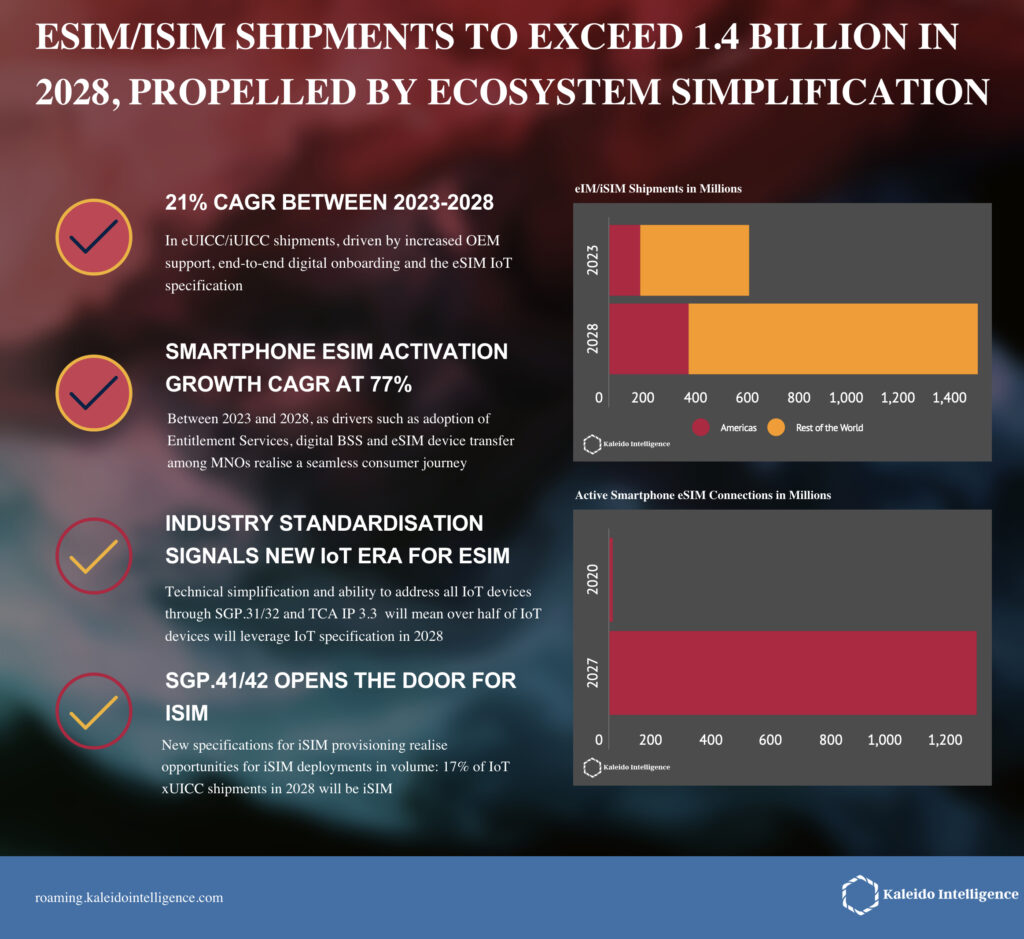Research predicts 77% average annual increase in smartphone activation to 2028, plus big IoT push
New research, from Kaleido Intelligence, highlights how end-to-end digital onboarding processes for consumer devices is critical at scale. It points out that many mobile operators still rely on QR codes “which do not offer an optimal end-user experience”.
The impetus to move to digital onboarding will be created, Kaleido predicts, by the increased uptake of entitlement service – that is, managing which services are available to particular customers – and modernising BSSs. Both are key to supporting and digitally enabling eSIM connectivity for disparate consumer devices.
Being able to transfer eSIMS from one device to another as well as use them while travelling, for example to reduce cost, will become an important element of competitive differentiation for operators, disrupting the market.
In other words, ultimately operators will be forced to embrace eSIM: Kaleido anticipates that smartphone eSIM activations will grow on average by 77% between 2023 and 2028, as shown below.

IoT gamechanger
IoT specifications for eSIM will start to be commercialised as “pre-compliant solutions” in 2024, Kaleido reckons, and “will lower the technical and investment burden” of supporting IoT connectivity.
Although many MNOs may not have a concrete strategy for IoT retail connectivity, they will be able to offer eSIM-based wholesale services via the new specification. Kaleido expects that more than half of all active IoT eSIMs will be using the new specification by 2028, driving the demand “for connectivity profiles” to unprecedented levels.
LPWAN Optimisation
Using eSIM for LPWAN (NB-IoT and LTE-M) connectivity has been challenging as eSIM profiles taxed low-bandwidth, battery-powered devices, hence the machine-to-machine specification they used relied on SMS or TCP/IP.
The new eSIM IoT specification addresses LPWAN devices directly, using the Constrained Application Protocol (CAP) for transport. More importantly, the Trusted Connectivity Alliance (TCA) has introduced a smaller eSIM profile that uses less power for over-the-air eSIM LPWAN campaigns.
Steffen Sorrell, Chief of Research at Kaleido, commented, “The eSIM market has seen several developments recently that smooth the path to adoption, and address many lingering ecosystem challenges. The effect of this will mean eSIM or iSIM form factors will gradually become a de facto requirement by 2028 for most cellular devices.”


